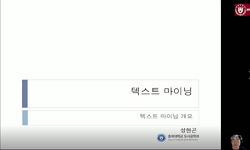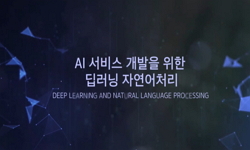연구의 목적은 텍스트 마이닝을 적용한 다양한 교육연구들의 동향을 분석함으로써 교육연구에 텍스트 마이닝 기법을 적용한 목적, 분석대상, 분석방법, 활용 SW에 대해 탐색하는 것이다. 연...
http://chineseinput.net/에서 pinyin(병음)방식으로 중국어를 변환할 수 있습니다.
변환된 중국어를 복사하여 사용하시면 됩니다.
- 中文 을 입력하시려면 zhongwen을 입력하시고 space를누르시면됩니다.
- 北京 을 입력하시려면 beijing을 입력하시고 space를 누르시면 됩니다.
https://www.riss.kr/link?id=A108185848
- 저자
- 발행기관
- 학술지명
- 권호사항
-
발행연도
2022
-
작성언어
-
- 주제어
-
KDC
370
-
등재정보
KCI우수등재
-
자료형태
학술저널
- 발행기관 URL
-
수록면
267-297(31쪽)
- 제공처
-
0
상세조회 -
0
다운로드
부가정보
국문 초록 (Abstract)
연구의 목적은 텍스트 마이닝을 적용한 다양한 교육연구들의 동향을 분석함으로써 교육연구에 텍스트 마이닝 기법을 적용한 목적, 분석대상, 분석방법, 활용 SW에 대해 탐색하는 것이다. 연구동향을 탐색하기 위한 방법으로 텍스트 마이닝 기법과 체계적 문헌고찰 방법을 적용하였다. 텍스트 마이닝 기법을 적용하기 위한 문헌은 지난 10년간 국내 학술지에 게재된 KCI 등재(후보) 논문(2012년~2021년)의 키워드 중 “텍스트 마이닝” 또는 “토픽 모델링”을 포함하면서 초록에 “교육” 또는 “학습”을 포함한 논문 215편이다. 텍스트 마이닝 기법에 의한 토픽모델링 결과, 주요 토픽으로 연구동향(42.8%), 교육과정 및 교육자료 분석(14.4%), 교육요구와 인식분석(14%), 교육정책 및 이슈분석(12.6%), 효과인식과 효과평가(11.6%), 개념 및 의미 탐색 (3.3%), 교육경험 이해(1.3%)가 도출되었다. 2015년부터 2021년까지를 3주기로 구분하여 연구 트렌드를 분석한 결과, 연구주제가 시간이 갈수록 다양해지고 분석대상도 표준화된 논문, 보고서, 교육과정을 분석하는 연구에서 점차 구체적인 교육맥락에서 요구와 인식을 분석하는 연구로 발전해 가고 있다. 텍스트 마이닝 기법 분석 대상의 논문 중 토픽할당 확률이 높으면서 분석기준에 대한 구체적인 내용을 포함하고 있는 24편의 논문을 대상으로 체계적 문헌고찰 연구를 수행하였다. 교육연구에서 텍스트 마이닝을 적용한 목적은 내용분석 (63%), 사고탐색(17%), 성과요인탐색(17%), 경험탐색(5%)로 확인되었다. 분석대상은 연구참여자가 작성한 텍스트(34%), 논문이나 보고서(30%), 교육과정 또는 교과서(13%), 뉴스기사나 보도자료(13%) 등으로 나타났다. 분석방법으로는 키워드 빈도 분석(63%)이 가장 많이 활용되었고 그 다음으로 토픽모델링(46%), 의미 연결망 분석(46%), 워드클라우드 분석(34%) 등으로 나타났고 활용 SW로는 R(67%), NetMiner(21%), UCINET(17%) Python(9%), TEXTOM(9%)으로 나타났다. 연구결과, 텍스트 마이닝을 적용한 교육연구의 동향을 심층적으로 분석함으로써, 향후 다양한 교육연구주제에서 텍스트 마이닝을 연구방법론으로 적용할 수 있음을 시사하였다.
다국어 초록 (Multilingual Abstract)
The purpose of this study was to explore the characteristics of educational research applying text mining techniques by analyzing the research trends. Text mining techniques and systematic literature review methods were applied. The literature to whic...
The purpose of this study was to explore the characteristics of educational research applying text mining techniques by analyzing the research trends. Text mining techniques and systematic literature review methods were applied. The literature to which text mining techniques was applied was 215 KCI-listed (and KCI candidate) journal papers published in domestic journals in 2012-2021. As a result of applying the text mining technique, the following research topics were derived: research trends (42.8%), curriculum and educational materials analysis (14.4%), educational needs and perception analysis (14%), educational policy and issue analysis (12.6%), effect recognition and evaluation (11.6%), concept and meaning exploration (3.3%), and understanding of educational experiences (1.3%). As a result of analyzing research trends, it was found that research topics have become more diverse over time, and research that analyzes standardized papers, reports, and curricula is gradually evolving into research that analyzes needs and perceptions in specific educational contexts. A systematic literature review study was conducted on 24 papers with a high probability of topic allocation and containing specific contents of the analysis criteria. In educational research, the purpose for applying text mining was identified as content analysis (63%), exploring thinking (17%), exploring performance factors (17%), and exploring experience (5%). The data sources were texts written by participants (34%), papers or reports (30%), curriculum or textbooks (13%), and news articles or press releases (13%). Keyword frequency analysis (63%) was used the most, followed by topic modeling (46%), semantic network analysis (46%), and word cloud analysis (34%). The software utilized was R (67%), NetMiner (21%), UCINET (17%), Python (9%), and TEXTOM (9%). This study suggests that text mining can be applied as a research methodology for various educational research topics in the future.
목차 (Table of Contents)
- I. 서론
- Ⅱ. 이론적 배경
- Ⅲ. 연구 방법
- Ⅳ. 연구 결과
- Ⅴ. 결론 및 논의
- I. 서론
- Ⅱ. 이론적 배경
- Ⅲ. 연구 방법
- Ⅳ. 연구 결과
- Ⅴ. 결론 및 논의
동일학술지(권/호) 다른 논문
-
중학생의 차별 경험과 교사-학생 관계의 자기회귀교차지연 효과 분석
- 한국교육학회
- 박선나
- 2022
- KCI우수등재
-
토픽모델링과 의미연결망 분석을 활용한 영재교육 연구 동향 분석
- 한국교육학회
- 최진수
- 2022
- KCI우수등재
-
대학생용 교수-학생 상호작용의 질 척도 개발 및 타당화
- 한국교육학회
- 최보금(Bo Keum Choi)
- 2022
- KCI우수등재
-
소득계층별 사교육 유형별 사교육 참여율에 대한 코로나의 영향
- 한국교육학회
- 박혜랑(Hyerang Park)
- 2022
- KCI우수등재





 KCI
KCI 스콜라
스콜라






